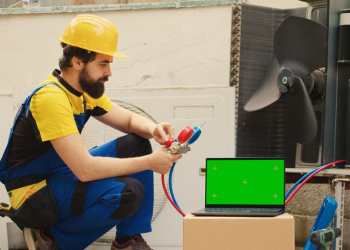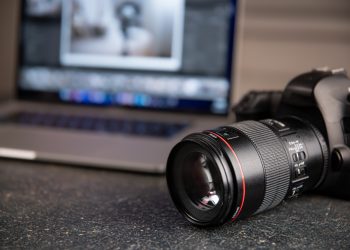Leaders today believe that visual content is a commodity and easy to create. What actually happens? With the rise of Generative AI, high‑quality visuals can be produced from a text prompt in seconds.
That turns visuals from “nice to have” into a strategic asset. So what can you do about it? Understand and harness the “best AI image generators,” and you can gain a competitive edge.
Some key reasons this matters:
- Attention spans are shorter, so visuals that catch the eye matter more.
- Brands, marketers, and product teams need faster visuals for A/B tests, concepts, and campaigns.
- If you’re part of an AI development company, this shift means you can offer not just model development, but full‑stack creative pipelines.
- You don’t need big studio budgets to generate a compelling image.
In short, picking the right “AI image generators” becomes a strategic decision, not just a fun experiment.
What to Look For in a Top AI Image Generator
When evaluating top AI image generators, here are the criteria that matter:
a) Prompt fidelity
How well does the generator follow your requests? Many tools produce visually appealing results, but fewer deliver precisely what you intended. For example, DALL·E 3 is praised for its enhanced understanding of prompts.
b) Quality of output & style flexibility
Are the images photorealistic? Stylised? Can you do both? Are there fine‑tune controls (style, lighting, composition)? For instance, Stable Diffusion XL delivers large-scale improvements.
c) Commercial use rights & licensing
Even if you get amazing visuals, if you can’t use them commercially, you’re stuck. Adobe Firefly explicitly states that it produces commercially safe output.
d) Cost / credits & scalability
Many tools use credit systems, tiers, and subscriptions. You’ll need to assess the cost per image versus its value.
e) Ethical safeguards & model provenance
With great power comes responsibility: tools must address bias, copyright, and misuse. For example, OpenAI has introduced detection for DALL·E‑generated images.
The Top 10 Best AI Image Generators in 2026
Alright, let’s get to what you actually came here for. We’ve ranked these based on image quality, ease of use, unique features, and practicality in real-world applications. No fluff, just the tools that actually deliver.
- Google Gemini
Google’s Nano Banana via Gemini 2.5 Flash is the flash-in-the-pan hero—3-20 second gens with character consistency that sticks. Inpaint pros, Workspace integration, and photoreal edits ( “Change hair to curly”). Multilingual prompts, too.
Why it stands out:
- Lightning-fast 3-8 sec outputs
- Perfect face consistency & inpainting
- Free 100 images/day + multilingual prompts
What to watch:
- Text rendering is still hit-or-miss
- Locked to the Google ecosystem
- “Safe” filter can neuter edgy prompts
Best fit: If you need “buzz‑worthy” visuals, novelty, or if you are an early adopter and are open to experimentation.
- Stable Diffusion XL
Stable Diffusion XL is an open-source tool that runs locally or via DreamStudio; it is highly customizable and remains the champion in realism as of 2026.
Why it stands out:
- Open‑source, highly customisable: you can run it locally, fine‑tune models, and integrate into your own pipeline.
- The SDXL research paper shows significant improvement in resolution & fidelity.
What to watch:
- Requires more from the user (hardware, setup, fine‑tuning) compared to “plug‑and‑play” tools.
- The user interface may not be as polished as commercial SaaS solutions.
Best fit: If you are a generative AI development company building bespoke solutions, and you want deep control or want to embed “AI image generators” inside your own product stack.
- Midjourney
Oh man, if there’s one name that screams “best AI image generators” in 2026, it’s Midjourney. This Discord-born beast has evolved into a full-fledged web app, abandoning its chatty vibes for a sleek interface that pros love.
Why it stands out:
- Unmatched painterly textures & dramatic lighting
- Character consistency + remix magic
- Blazing-fast 20-30 sec generations
What to watch:
- Steep prompt-learning curve
- No free tier anymore
- Lower plans make images public
Best fit: Concept artists, book covers, fantasy worlds
- DALL·E 3
Remember when DALL·E was the cool kid at the party? Now, it’s a top AI image generator that turns text into visuals like a creative teammate. Prompt it: “Make the sunset beach scene pop, add a hammock with a book,” and it delivers. DALL·E handles complex scenes, readable text, spot edits via inpainting, and even tweaks images you upload.
Why it stands out:
- Zero learning curve
- Readable text in any language
- Seamless Zapier & API workflows
What to watch:
- 20-120 sec wait times
- Free tier = 2 images/day
- Slightly “safe” corporate vibe
Best fit: Ideal for marketing teams needing fast, reliable hero visuals, marketing assets, or social banners.
- Ideogram
If your designs scream “words matter,” Ideogram 3.0 is your 2026 MVP. This one’s laser-focused on typography where text isn’t a blurry afterthought but crisp, customizable perfection. Magic Prompts auto-enhance your ideas, and the canvas editor lets you remix, batch, or create character sheets.
Why it stands out:
- Crisp, readable text every time
- Magic Prompt auto-upgrade
- SVG export on Pro
What to watch:
- Less artistic depth than Midjourney
- Free-tier images are public
- 10 credits/week cap
Best fit: Perfect for infographics, UI/UX mockups, and structured visuals. It’s excellent for generative AI development companies needing diagrams without manual work.
- Leonardo AI
Leonardo AI will be the darling of 2026 for game developers and 3D artists, but don’t sleep on it for general art. Vast model library, hyper-realistic renders, and tools like motion for subtle animations. Generates textures, characters, or whole scenes with style presets from cyberpunk to watercolor.
Why it stands out:
- Train your style in 10 mins
- 150 free credits daily
- 3D texture & animation export
What to watch:
- Overkill for simple tasks
- Paid for advanced edits
- Queue times on free
Best fit: For creative teams and generative AI development companies that need on-brand visuals without starting from scratch every time.
- Adobe Firefly
Adobe Firefly turned Photoshop into a generative playground. Text-to-image, sure, but it’s the editing that slays: Generative Fill to add/remove elements, Expand for canvas growth, and vector recolors. Trained on licensed stock, so zero IP headaches.
Why it stands out:
- Generative Fill + Expand in one click
- Trained only on licensed Adobe Stock
- Vector recolor & 3D-ish renders
What to watch:
- Tied to Creative Cloud sub
- Free 25 credits burn fast
- Not a standalone strong
Best fit: If you are focused on marketing visuals, brand content, or are already using Adobe’s ecosystem, and want a trusted “generator” in your toolkit.
- Runway Gen-3 Alpha
Runway Gen-3 Alpha blurs the line between still images and motion. Known for its ultra-realistic renders and fluid scene transitions, it’s one of the best AI image generators for teams working on both visuals and short video sequences.
Why it stands out:
- 4K video frames in seconds
- Camera control & lip-sync
- Personal model training
What to watch:
- Credits vanish fast
- Video focus = pricey
- Learning curve for motion
Best fit: Filmmakers, Reels/TikTok pros, storyboards
- Reve AI
Reve Labs’ baby exploded in 2025 and owns 2026 with photorealism that fools the eye. Conversational editing via “Reve Flow”—chat to tweak, like “Make the eyes bluer, add rain.” Excels at complex prompts, including object placement, lighting, and even transparent elements.
Why it stands out:
- Nails complex 50-word prompts
- 20 free gens daily
- Face-lock across edits
What to watch:
- No manual brush tools yet
- Struggles with pure abstraction
Best fit: Headshots, fashion, client revisions
- Recraft
Recraft is the graphic designer’s secret weapon in 2026—native SVG outputs mean scalable icons, logos, or sets without pixelation. Inpaint/outpaint, background swaps, and style consistency from references (HEX-match your brand).
Why it stands out:
- True vector output
- Brand-color lock + mockup mode
- 30 free credits/day
What to watch:
- Weak photoreal game
- Smaller community
- $12/month for teams
Best fit: Ideal for generative AI development companies or design teams that need reliable, on-brand visuals without starting from scratch.
Pick Your Pixel Potion and Level Up
Whew, what a ride! From Midjourney’s artistry to Runway’s dynamism, these top AI image generators are rewriting the rules in 2026. They are saving hours, sparking ideas, and leveling the creative field.
Start with free tiers to test vibes: Ideogram for text-heavy, FLUX for realism, ChatGPT for chats. Craft killer prompts (adjectives + style + mood), iterate ruthlessly, and always credit ethically.
But hey, if off-the-shelf isn’t cutting it. If you need a bespoke AI image generator tailored to your business, such as one that integrates with your CRM or is fine-tuned for niche styles.
Consult with a reputed AI development company for custom builds, or dive deeper into generative wizardry with a Generative AI development company. They’re turning visions into code faster than you can prompt.









